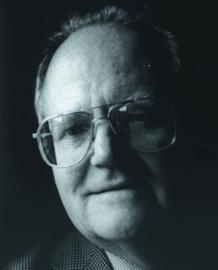This is a far cry from the late sixties when Oughton joined Oscar Faber’s Belfast office to take on the air conditioning project at the new City hospital: “That was a major project, probably the biggest in Northern Ireland at the time. It was an 800 bed central hospital being built to replace the existing unit. Being such a big project it was quite daunting but it was a great opportunity for a fairly raw young engineer.”
In 1970 Oughton came to St Albans, where he has been based ever since. “Most of my work has been project based. I’ve done some prestigious projects over the years. The most recent big one would be the refurbishment of Windsor Castle. It’s been an interesting career.”
While studying for an MSc at Bristol University in the mid eighties, Oughton became a director at Oscar Faber and ran the South East services section of the business for five years before stepping aside to take up a wider divisional role last year.
He also managed to produce three editions of one of the industry’s standard texts, Faber & Kell’s Heating and Air Conditioning of Buildings.
As CIBSE president, Oughton is keen to stress the need to educate young people about building services. But he recognises that this can’t be done overnight. “The advice you get when you start thinking about your presidential theme is ‘keep it simple and achievable’, but I really believe that educating and attracting young people into the industry had to be addressed. It’s not something that can be achieved in one year, but I want to produce the framework within that year for it to be taken forward, and hopefully there wil be some quick wins along the way.”
Oughton has a clear view on how the message should be conveyed to youngsters. “There’s no doubt that young people are enthused by innovation and environmental issues. They like to work with high-tech design aids, they have a social conscience and they want to make a contribution to society. We are in an industry that can make a difference to the environment. When we promote building services at Faber Maunsell, those are the issues that we talk about because that’s what interests young people, not pipes, ducts and cables.”
As well as working with universities and industry across the country, Oughton is adamant that the best way of getting the message across to college students, and school children, is to use those who have, themselves benefited from training schemes in building services: “Young engineers on graduate schemes are happy to go into schools and talk to children about what they do and that’s the best way to get the message across.”
Oughton wants to build on the initiatives already in place and he belives that “galvanising the CIBSE regions to support those initiatives” is the best way to start. He also hopes by the end of his presidency, to have a model for recruitment, sponsorship and training that others can follow. “There are more companies signing up to the CIBSE accredited training scheme – a very good sign. There is a lot of hard work to do and CIBSE can’t do the work itself, but it can act as a catalyst and get the message to the industry and it’s members and provide both with ample material to take the message forward.”
Source
Building Sustainable Design





















No comments yet